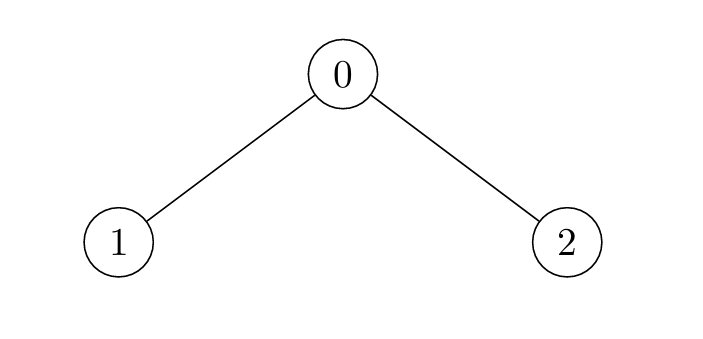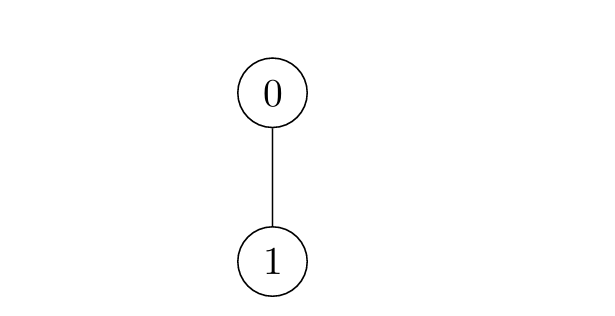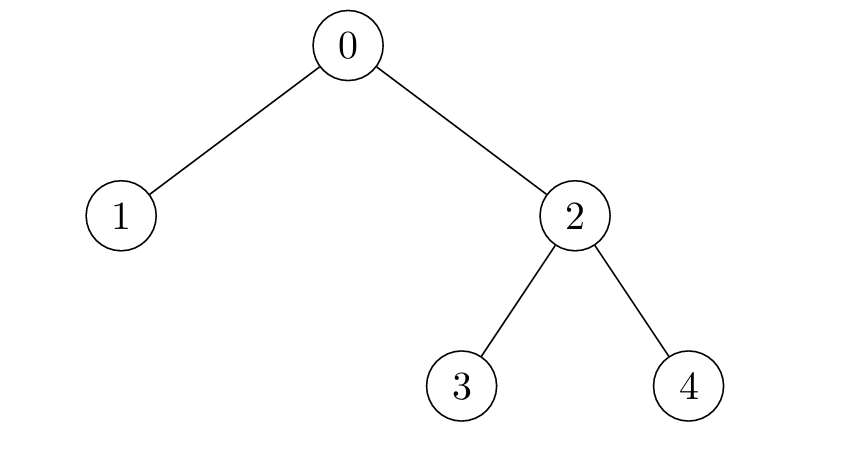3241. Time Taken to Mark All Nodes
3241. Time Taken to Mark All Nodes
Description
There exists an undirected tree with n nodes numbered 0 to n - 1. You are given a 2D integer array edges of length n - 1, where edges[i] = [ui, vi] indicates that there is an edge between nodes ui and vi in the tree.
Initially, all nodes are unmarked . For each node i:
- If
iis odd, the node will get marked at timexif there is at least one node adjacent to it which was marked at timex - 1. - If
iis even, the node will get marked at timexif there is at least one node adjacent to it which was marked at timex - 2.
Return an array times where times[i] is the time when all nodes get marked in the tree, if you mark node i at time t = 0.
Note that the answer for each times[i] is independent , i.e. when you mark node i all other nodes are unmarked.
Example 1:
1 | Input: edges = [[0,1],[0,2]] |
Explanation:

For
i = 0:Node 1 is marked at
t = 1, and Node 2 att = 2.For
i = 1:Node 0 is marked at
t = 2, and Node 2 att = 4.For
i = 2:Node 0 is marked at
t = 2, and Node 1 att = 3.
Example 2:
1 | Input: edges = [[0,1]] |
Explanation:

For
i = 0:Node 1 is marked at
t = 1.For
i = 1:Node 0 is marked at
t = 2.
Example 3:
1 | Input: edges = [[2,4],[0,1],[2,3],[0,2]] |
Explanation:

Constraints:
2 <= n <= 10^5edges.length == n - 1edges[i].length == 20 <= edges[i][0], edges[i][1] <= n - 1- The input is generated such that
edgesrepresents a valid tree.
Hints/Notes
- reroot dp
- Biweekly Contest 136
Solution
Language: C++
1 | class Solution { |